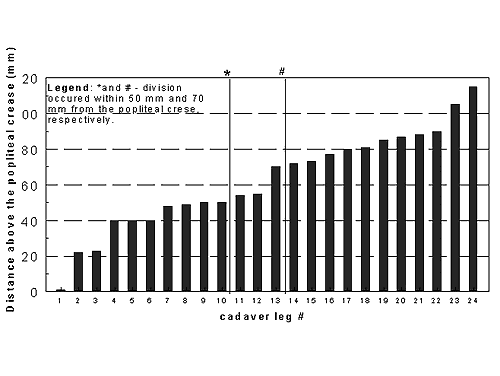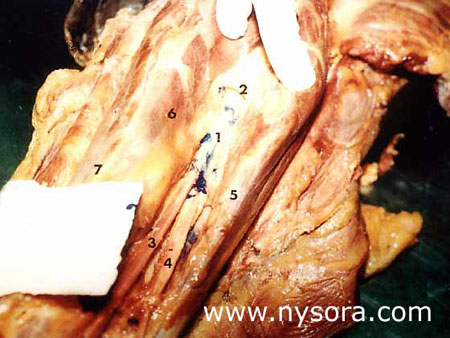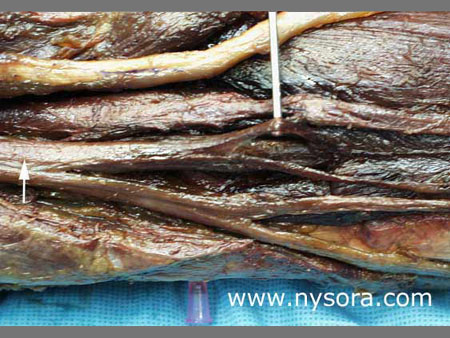In an attempt to find a possible explanation for the frequent occurrence of anesthesia in the distribution of only one division of the popliteal nerve, we examined the popliteal fossa in cadavers to determine the level at which the nerve divides above the popliteal fossa crease.
|
Based on: “Hadzic A, Vloka JD, Kitain E, Lesser JB, April EW, Thys DM. Division of the Sciatic Nerve and its Possible Implications in Popliteal Nerve block. Anesthesiology 1996; 85(3A): A733. Introduction In the classical approach to the sciatic nerve block at the knee level, the needle is inserted 50 to 70 mm above the popliteal fossa crease and advanced anteriorly until there is paresthesia or response to nerve stimulation. Ideally, the tip of the needle is positioned next to the main trunk of the nerve (Figure 1), prior to its division into the tibial (TN) and common peroneal nerves (CPN). In an attempt to find a possible explanation for the frequent occurrence of anesthesia in the distribution of only one division of the popliteal nerve, we examined the popliteal fossa in cadavers to determine the level at which the nerve divides above the popliteal fossa crease. Methods Twenty-four adult cadaver legs, which were free of obvious pathology were dissected. The cadavers had been deceased from six to 18 months and were embalmed for anatomical purposes using a solution of phenol (13%) as the principal fixative, and glycerin (28%) for retention of water content. The sciatic nerves were dissected from the level of the popliteal crease to the thigh and the distances from the popliteal fossa crease to division of the sciatic nerve into TN and CPN were recorded. Results  The sciatic nerve divided at the mean distance of 62 ± 28 mm (range 0 to 115 mm) above the popliteal fossa crease (Figure 1). In 13 legs (54%), the sciatic nerve was found to divide within 70 mm of the popliteal crease. The sciatic nerve bifurcated within 50 mm of the popliteal crease in 11 of these legs. In the remaining 11 legs (46%), the sciatic nerve bifurcation occurred at a distance greater than 70 mm. Conclusion The sciatic nerve divides into TN and CPN at a highly variable distance from the popliteal crease (Figure 2). If a needle is inserted at 50 mm or 70 mm above the popliteal fossa crease, there is 54% and 46%, respectively, chance that the tip of the needle will be distal to the division of the sciatic nerve. Thus, injection of local anesthetic (LA) following the described technique may result in a pool of LA next to only one of the main branches of the sciatic nerve. Lack of intimate contact of LA with both divisions of the nerve combined with a significant diffusion barrier to LA by the thick perineural tissue of the sciatic nerve could be responsible for the variable success rate typically reported with PNB. Based on these observations, LA is more likely to be deposited adjacent to the main trunk of the sciatic nerve (Figure 3) with a more proximal needle insertion.
|

